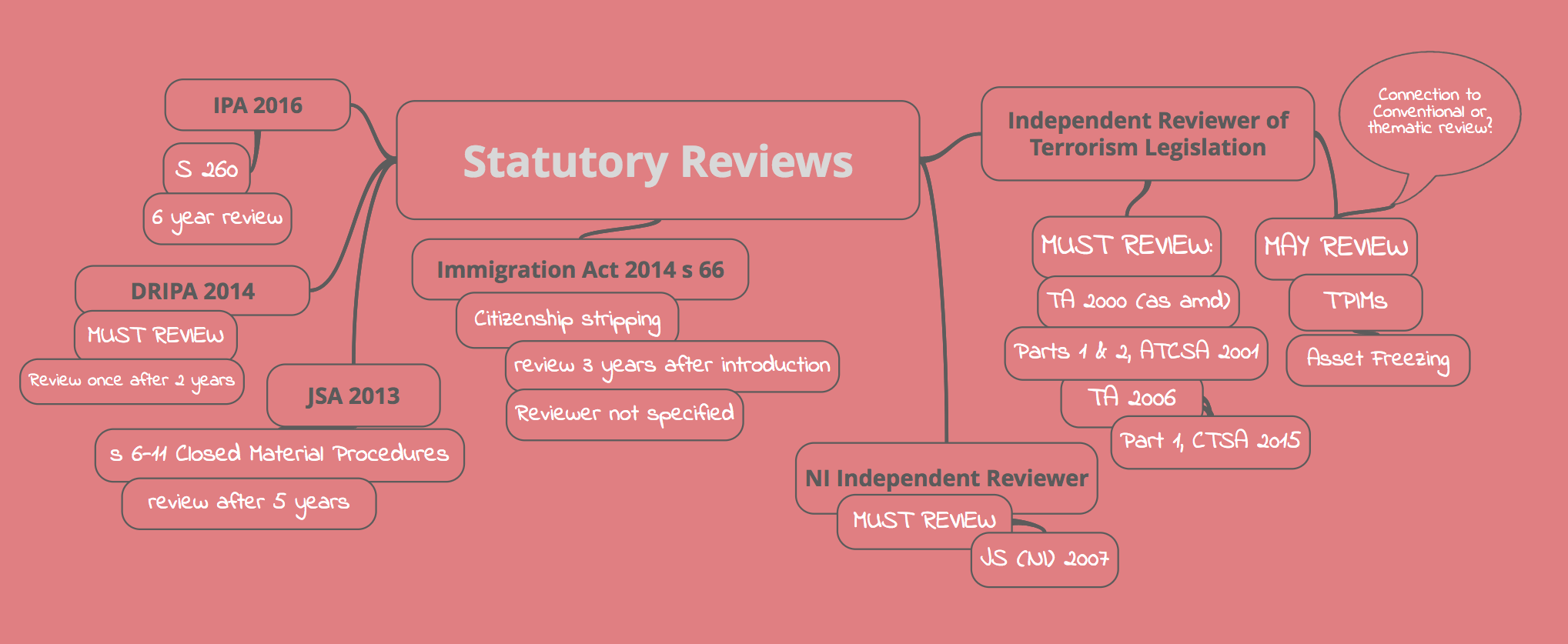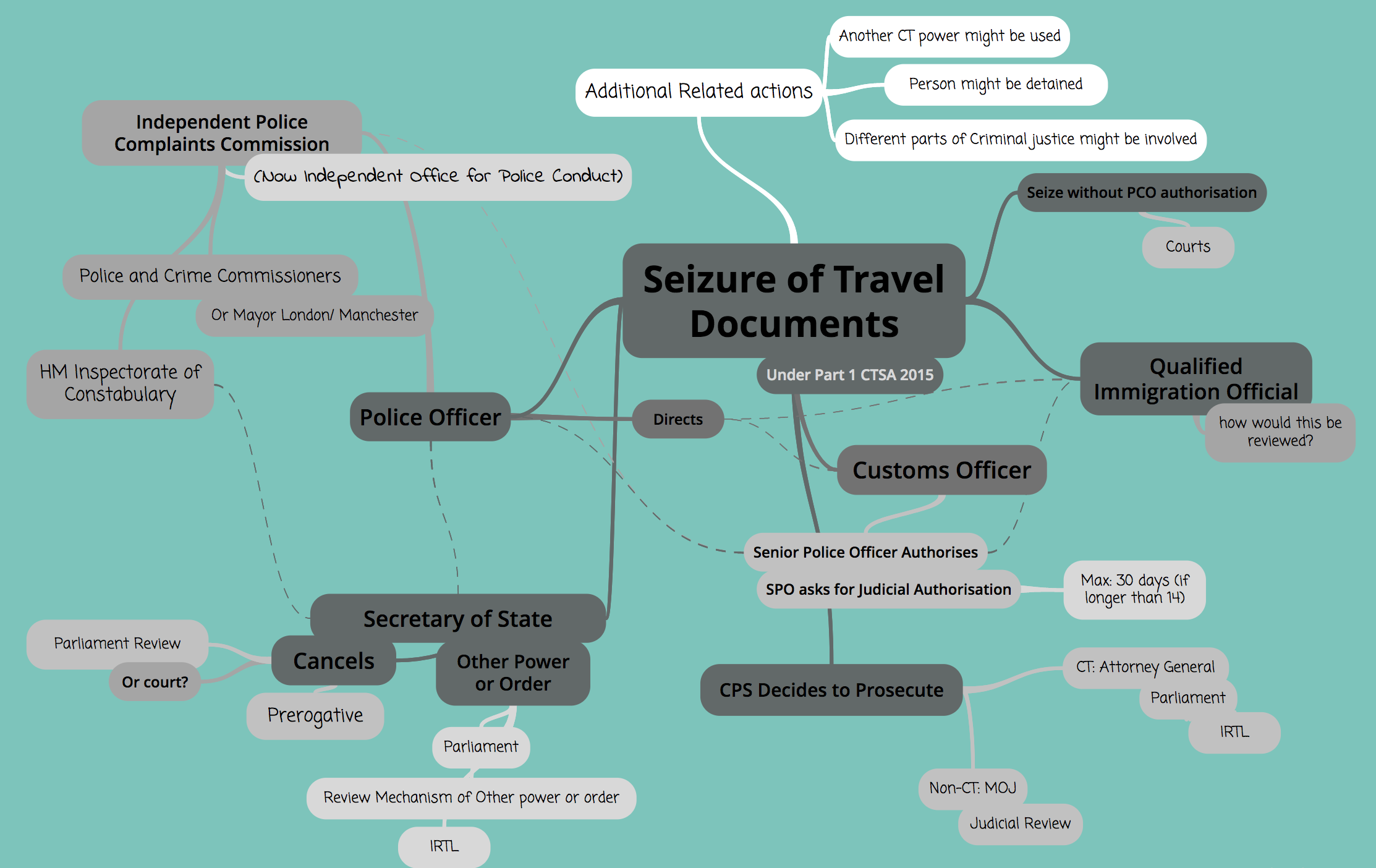Following on from our last post, introducing how we mapped counter-terrorism in the UK, our analysis indicated we have good reason to suggest that counter-terrorism review involves multiple institutions and government actors in varied and potentially interacting and opaque ways. Counter-terrorism review can be automatic, as in required by statute periodically or by sunset clause; complaint triggered, such as through ombudsman, professional standards complaints, commissioners, or an independent reviewer; politically triggered, for example in reaction to an incident or campaign, MPs’ questions, or Parliamentary Committee Inquiry; or ad hoc, such as other forms of inquiry or regulatory review. While these categories will be our starting point for further research, we do not envision them to be static or divorced from one another. Rather, we are particularly interested in where and how they overlap and interact.
To establish which review mechanisms we should subject to more in-depth qualitative analysis, we worked through some of the mechanisms we had identified. First, we looked at automatic reviews to try to identify relevant statutory reviews.

As you can see, our first attempt highlighted a range of Acts and powers that required review. In so doing, it became clear that we might be able to divide these into different types as some are annual, like the Terrorism Act 2000; others are periodic, like the Immigration Act 2014; some are one off, like the Data Retention and Investigatory Powers Act 2014; and some are continuous but not fixed by a timetable, like Terrorism Prevention and Investigation Measures. These differences suggest that legislative approaches to review may not conform to a singular pattern. Furthermore, there may not be established best-practice in CTR. It is clear that as far as statutory counter-terrorism powers are concerned, a singular comprehensive review mechanism is not apparent.
Next, we attempted a different approach to the material, focusing not on the general statutes or institutions, but on specific powers. Approaching the material in different ways should indicate overlaps between the different mechanisms and highlight the various ways in which a review or complaint could arise. We chose to look at the seizure of travel documents under Part 1 of the Counter Terrorism and Security Act (CTSA) 2015. So, what happens when someone has their passport seized? Who takes it and how is the use of that power reviewed?

Working through the different regulations and likely responses to the seizure of a travel document, we established that reviews can and should take place at a number of points and by a number of bodies. These include various institutions of the criminal justice system which might be expected (the police and its administration, customs officials, judicial authorisation, and the Crown Prosecution Service), but also the Independent Office for Police Conduct (IOPC, formerly the Independent Police Complaints Commission), Parliamentary Review, and the Independent Reviewer of Terrorism Legislation. Where additional counter-terrorism powers are used in conjunction with the power to seize travel documents, then the relevant review mechanisms of those powers will also come into play.
From this we can deduce that in relation to the seizure of travel documents, there are a number of interlocking counter-terrorism review mechanisms. Some are triggered automatically, such as judicial authorisation for retaining a document beyond the initial seizure period. Other reviews are only triggered by complaint, such as when the IOPC get involved or when Parliament decides to review the Secretary of State’s decision to cancel or extend the seizure. Some elements need further analysis, such as whether there is a separate or additional review mechanism for Qualified Immigration Officials.
It became evident that to understand the practice of counter-terrorism review we will need to engage with a range of actors from a cross-section of the Government, Parliament, the Courts, Ombudsman, Police and complaints processes.

5 thoughts on “Mapping Counter-Terrorism Review”